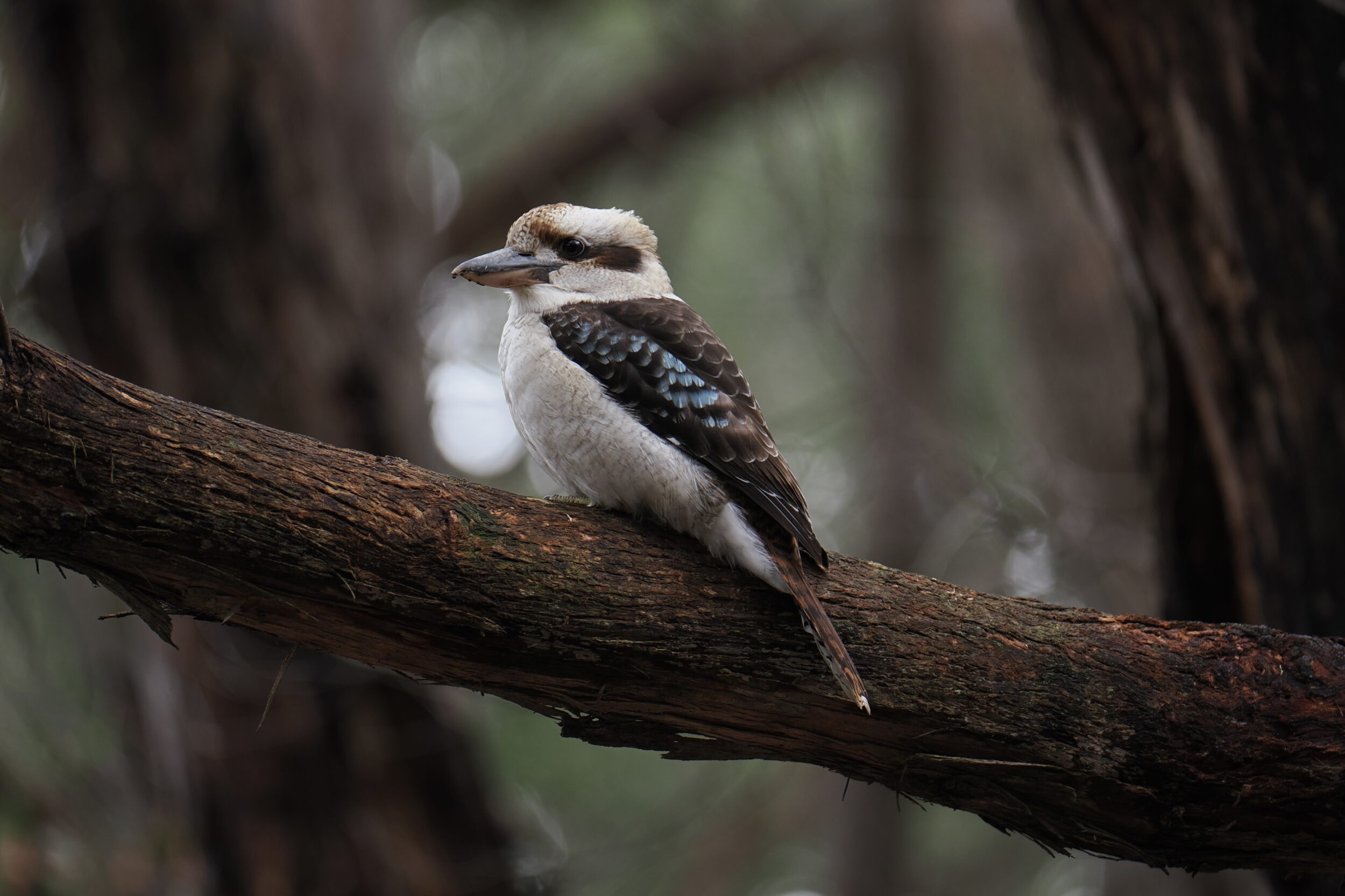Q: if you walk in Deep Creek Conservation Park’s old-growth stringybark forest, what is the largest carnivorous (as distinct from omnivorous) fauna species that you are highly likely to see at close quarters?
A: Dacelo novaeguineae, pictured above, in said forest at 11 am on 20 June 2023. (photo is ©️ Doug Spencer)
Better known as “the laughing kookaburra”, this usually-sedentary tree-dweller lives and hunts in woodlands and forests.
It is the world’s largest kingfisher, albeit one that generally never – or very rarely – is able to hunt fish. (however, any human silly enough to place a lidless aquarium on an exposed verandah, within range of any kookaburras’ very acute eyesight…)
Most Australian humans’ attitude to this bird is anthropomorphic, sentimental, and unconnected to its actual behaviour/intent.
The “laughter” has nothing to do with mirth; more often than not, its intent is aggressive.
Laughing kookaburras consume just about every other fauna species that they are physically capable of killing, including other birds.
Their natural range is confined to parts of mainland eastern Australia.
However, via deliberate intervention by “settler” humans, they now also thrive in other places.
They have become so well-entrenched in Western Australia’s southwest that many WA humans do not even realise that they are feral birds
Recently, they reached Esperance; a move to repel the “laughing” invaders came to nought.
Dacelo novaeguineae now also thrives in Tasmania, and a small (small, so far?) population lives in New Zealand.
Reportedly, laughing kookaburra numbers are currently declining, but they comfortably exceed Australia’s human population.
Footnote
The laughing kookaburra’s Latin/“scientific” tag is even more misleading than its common name.
Dacelo novaeguineae has never inhabited New Guinea.
However, in the 1770s a lying Frenchman delivered the species’ first European-published illustration and written description.
”Explorer” and “naturalist” Pierre Sonnerat pretended that he had seen and drawn the laughing kookaburra in the wild, whilst exploring New Guinea.
Monsieur Sonnerat never set foot on New Guinean soil.
Neither has Dacelo novaeguineae!
Presumably, Sonnerat accessed “skin/s” which James Cook’s expedition had gathered from eastern Australia in 1770.
Two of the four kookaburra species call Australia home; the other two dwell in New Guinea, plus some nearby Torres Strait islands.
None of them cross the Torres Strait.
Click here to read Wikipedia’s excellent entry on Dacelo novaeguineae; the truth about the species’ “laughter” is far more interesting, complex and surprising than is any anthropomorphic fiction.
The collective noun for a “family group”/ “flock” of kookaburras: “riot”.
A good while before Europeans “discovered” kookaburras, the collective term “murder” had already been “taken”.
”Murder” was applied/misapplied to a less-deserving target.
Click this for an amusing musing on how crows got their “bum rap”.
